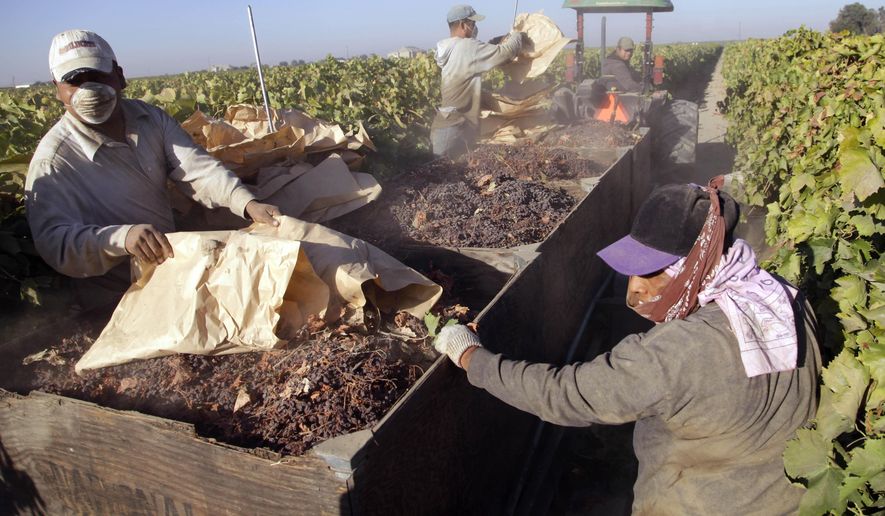OPINION:
The humble raisin — a grape left too long in the sun — is about to get its day in court. The U.S. Supreme Court has taken a case fraught with questions about economic freedom, the guarantee of private property and the rights set out in the Fifth Amendment, and at bottom it’s about a few raisins and the farmers who harvested them.
Seventy years ago the U.S. Department of Agriculture set up something called the “Raisin Administrative Committee” with the authority to take half of the nation’s raisin crop without paying for it in a scheme to inflate the price of raisins. (“We’re from the government and we’re here to help.”)
Every year the Raisin Administration Committee decides what the proper raisin yield should be to support an agreed-on price, and requires growers to surrender a percentage of their crop — up to half — to raisin packers. The packers then collect and sell this “reserve pool” overseas at discounted prices. The farmers are meant to get a small percentage of these proceeds. The Raisin Administrative Committee made $65 million on the stolen fruit in 2012 and used it to finance a large bureaucracy to promote raisins abroad. In some years the farmers get nothing.
Though removing nearly half of the raisins from the market was meant to inflate the price of raisins, many farmers would be happy to keep their raisins and take their chances in the market. The inflated prices hurt consumers, too, and lower demand for raisins. When a box of raisins costs too much, the consumer buys another snack.
Two California raisin farmers, Marvin and Laura Horne, finally had enough, and in 2002 withheld their crop from the federal program and began packing and selling the raisins themselves. They thought this would exempt them from the marketing order. But it didn’t, and 12 years later the Hornes owe the federal government more than $650,000 in penalties and fines.
The Hornes, arguing that the “takings clause” in the Fifth Amendment forbids such taking of personal property without just compensation, began an expensive journey through the courts. Last year, the 9th U.S. Circuit Court of Appeals in San Francisco ruled that there was no constitutional issue, that “the Hornes’ impatience with a regulatory program they view to be outdated” is “understandable,” but concluded that “the courts are not well-positioned to effect the change the Hornes seek, which is at base a restructuring of the way government regulates raisin production.”
The appeals court said the takings clause allows “less protection to personal [property] than to real property.” The farmers’ time, labor and produce was rendered as something less than “real,” like a plot of land. The Hornes should take their argument to a federal claims court, the judges said, since they had only been fined for violating farming regulations. Move along, there’s nothing to see here.
The Hornes appealed to the Supreme Court, and the high court ruled 9 to 0 that the San Francisco judges were mistaken. Justice Elena Kagan observed that the raisin raiding scheme might be “the world’s most outdated law,” and Justice Antonin Scalia said the government seemed to be issuing an ultimatum: “Your raisins or your life.” The court sent the case back to the appeals court to consider the case on its constitutional merits. There the Hornes lost again, and appealed to the Supreme Court again.
By taking the second appeal, the Supreme Court will rule on its constitutional merits. The raisin, now not so humble, and the Hornes and raisin growers everywhere will get their day their day in the sun. If the sun will shrink a grape into a raisin, maybe the Supreme Court can shrink a taking into justice.




Please read our comment policy before commenting.